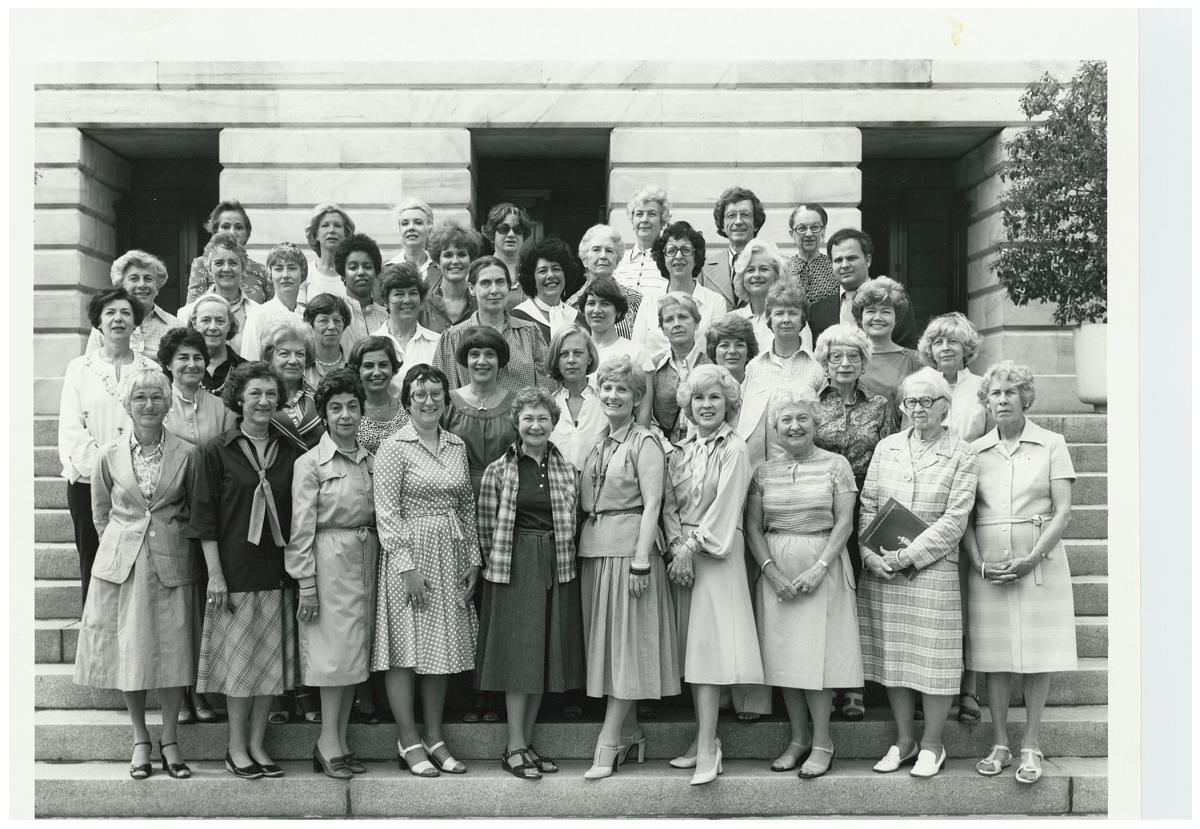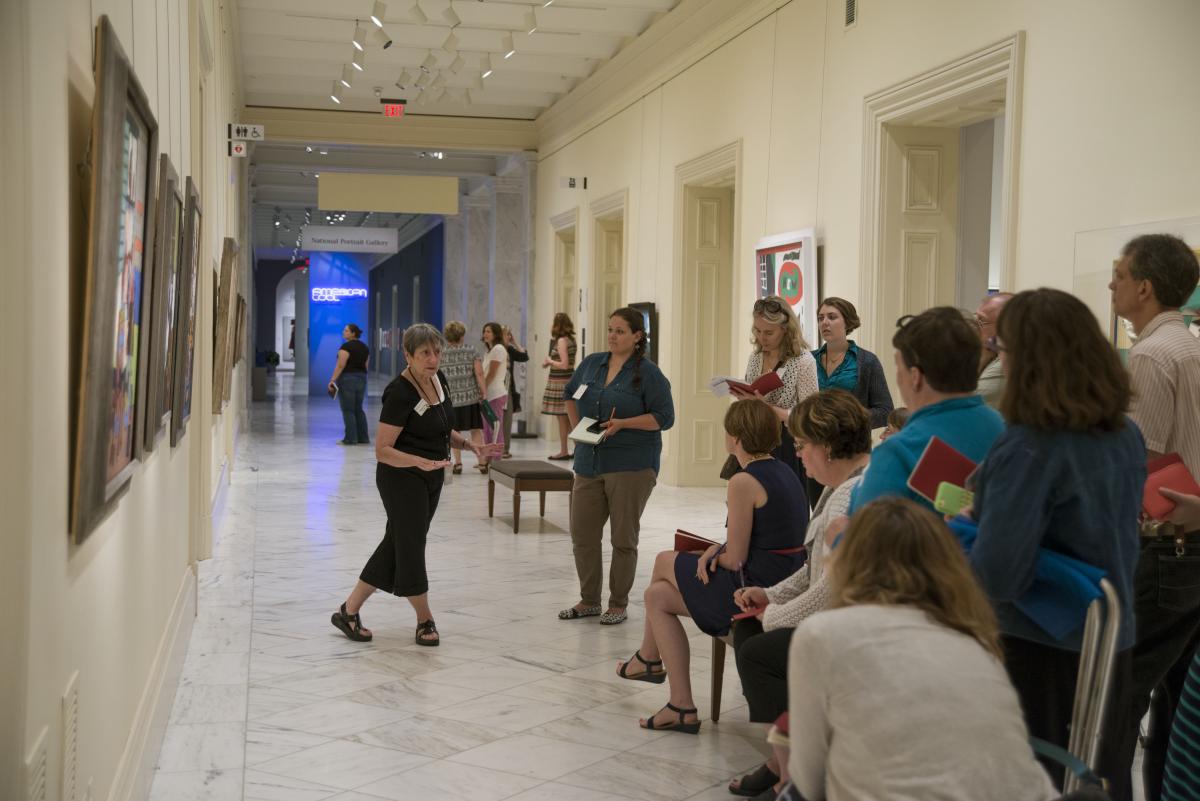
SAAM Stories: How did you first come to the Smithsonian American Art Museum fifty years ago?
Phoebe Kline: Having been a volunteer in a program which took American art presentations to 4th graders in the Bridgeport CT public schools, I was looking for a similar opportunity in the Washington area. I saw a call for people interested in becoming docents in the Washington Post column “Anne’s Reader Exchange” and the rest is history!
What has changed the most for you as a docent in that time?
The name of the museum has morphed from National Collection of Fine Arts to, eventually, Smithsonian American Art Museum. The Kogod Courtyard and its usefulness has impacted how docents use the space. There have been four directors, each with their own approach, and probably most impactful, the size and diversity of the collection has expanded in a wonderful way.
Is there an artwork or an interaction with the public that stands out?
There are several pieces that I have enjoyed using for both adult and student tours. At the Renwick, I love sharing Karen Lamonte’s Reclining Dress Impression with Drapery which is a surprise to visitors with a preconceived notion of what glass can do. And it provides an opening for discussing feminism. I love Hugo Robus’ bronze sculpture One and Another with its very basic shapes. I have used it to talk to school groups about becoming an individual, and to talk about nudity!
One memory stays with me from about 1975: I was doing a tour with high school students from DC and as we looked at Sam Gilliam’s painting April 4 one of the boys said that it reminded him of looking through the curtains at his grandmother’s house while the city was reeling from the assassination of Martin Luther King Jr. It took my breath away.
What is the best part about being at docent?
Of course, the opportunity to continually learn is a given. But here at SAAM, we’ve been fortunate to have had professionals who consider us colleagues and recognize our value as the public face of the museum. It’s been a gift to know and work with curators, installation folks and administration over the years.
How do you keep it interesting?
I love new opportunities, so in addition to gallery tours, I’ve done community outreach and I was part of the genesis of our Distance Learning component. I had the privilege of traveling with Education staff to Germany in 2004 to train DoDEA (Department of Defense Education Activity) teachers in the use of our technology and the possibilities for integrating art into their curricula. In the 80’s a group of SAAM docents gave tours at Barney Studio House on Sheridan Circle, and in conjunction with the National Building Museum in celebration of the centennial of FDR we gave walking tours of buildings associated with Roosevelt.
It’s always worthwhile to interact with docents beyond your own museum. I became involved with the National Docent Symposium (NDS), presented programs at 3 symposia and served on the NDS Council for six years, as well as I was also on the steering committee for the symposium when it was held in Washington in 2019. Now I am a permanent member on our own Smithsonian Institution Docent Exchange, a roundtable of representatives from the local Smithsonian docent programs.
How has leading years of access programs enhanced or changed your role as a docent?
Participating in our America InSight program has helped me personally as I age and my eyesight changes! Taking programs to senior centers and assisted living facilities reinforced how much art can be such a joy to us at any age. I have learned to look more deeply at objects myself, and become patient with others as they experience art.
What is the biggest misperception about being a docent?
Visitors often wonder how much an object is worth and that is something to which we are not privy. Aspiring docents often think that we know every object in the collection and that is an impossibility!
Any advice for a budding docent?
Join other docents in enrichment opportunities; you will have wonderful conversations and get great ideas for your own tours. Enjoy the opportunity to work with students; they give us fresh eyes. Don’t be afraid to say, “I don’t know, but I will look into it.”
Read an interview that marked the Phoebe's 40th anniversary as a docent at SAAM. Inspired by her work and want to learn how to become involved? Resources, including upcoming information sessions and how to apply, can be found on SAAM's volunteer page.




















